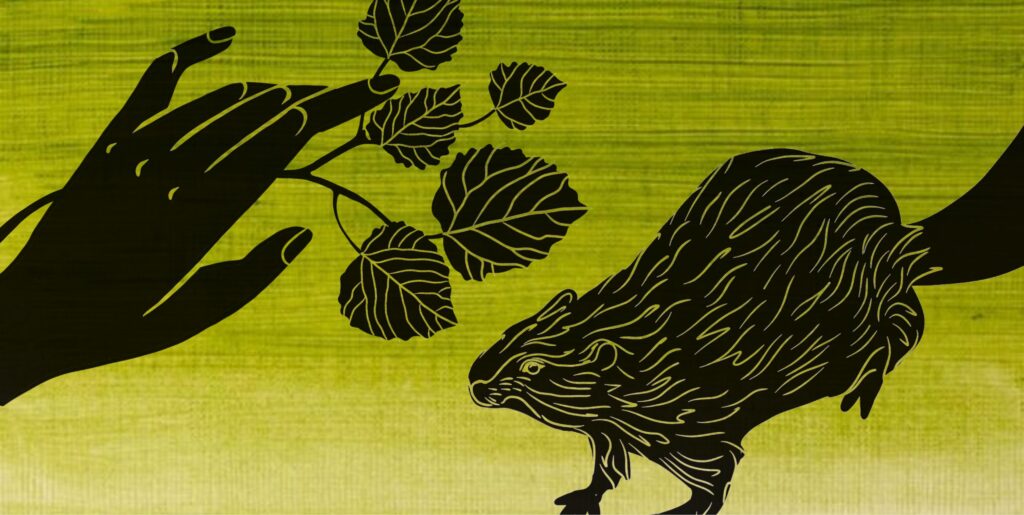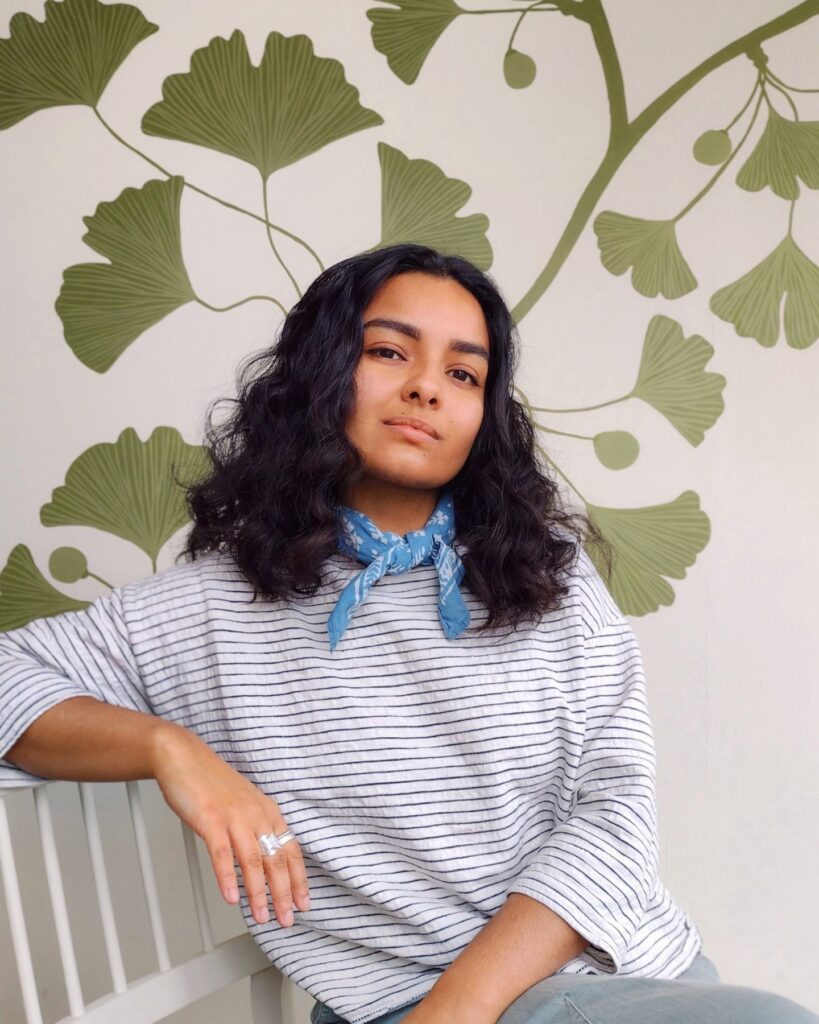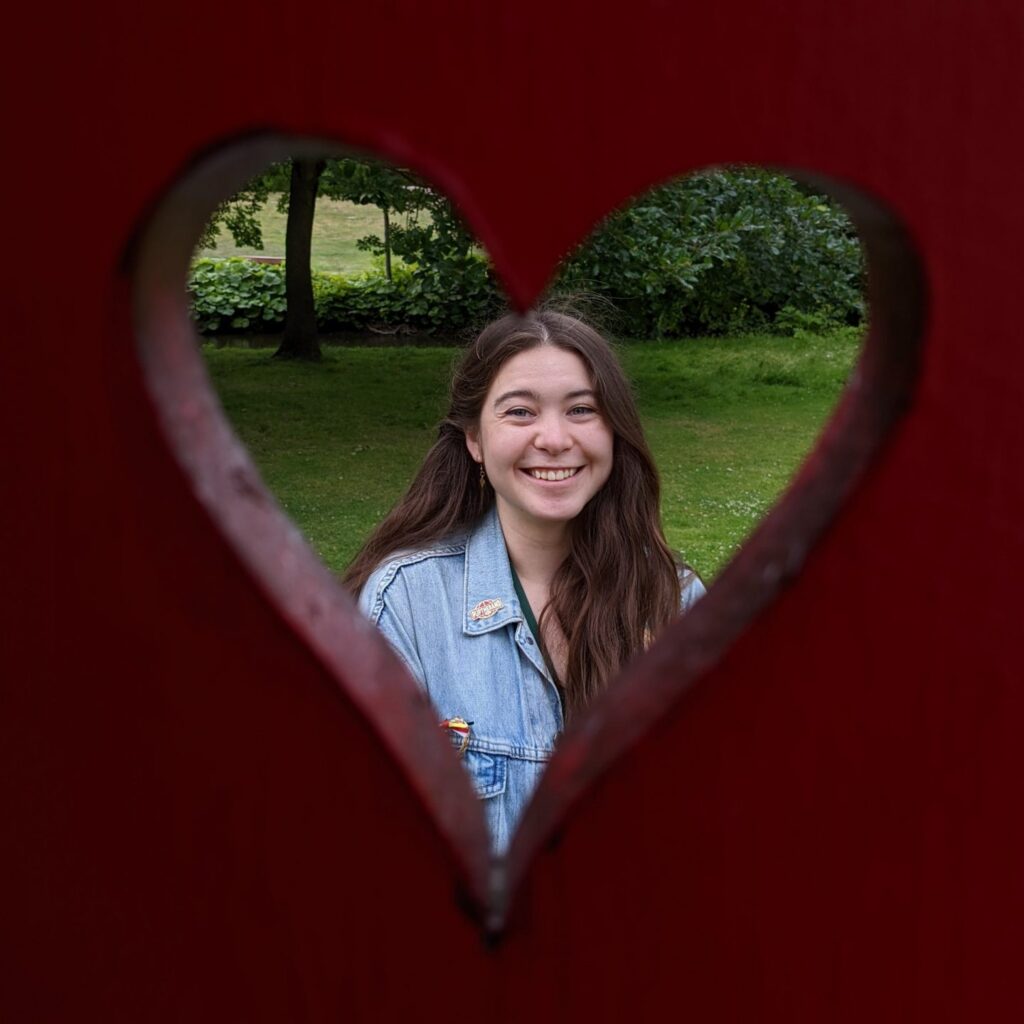Who is Belle Island? Billie Kearns and Jill Glatt on Being Local

What began as a mutual admiration between neighbours has blossomed into a collaboration across artistic disciplines. Spoken word poet and storyteller Billie Kearns and visual artist and educator Jill Glatt often run into each other on neighbourhood walks in the Inner Harbour. This fall, they’ve teamed up to present Storytelling and the Land: Who is Belle Island?, a public workshop in preparation for their upcoming exhibition at the Agnes Etherington Art Centre.
This interview has been edited for length and clarity.
When Jill Glatt was approached to participate in a series of local artist exhibitions at the Agnes, she knew who to call. “My immediate thought was, I do not want to do this alone. And I would really love to work with Billie on this because I think that we share similar perspectives and approaches to working with the land.” The pair met up to discuss what being ‘local’ means to them as artists who—despite being deeply involved in the arts community—have lived in Kingston for under a decade.
Glatt, whose artistic practice involves making dyes from foraged plants, suggested using buckthorn, an invasive species in the area. “Buckthorn is easy to harvest responsibly, because even if you were to cut an entire bush down, more would pop up in the same place.” On top of being a sustainable choice, buckthorn offers a dazzling array of colours: “You can get greens and purples from the berries, reds and oranges from the bark, and then yellow from the leaves… It’s a plant with a lot of history, cultural significance, and now impact on a place that Billie and I now call home. Buckthorn is local in the way that Billie and I are local—we’ve just been transplanted here.”
For Billie Kearns, this comparison is a useful entry point into talking about our own relationships with land. “When we hear the term invasive species, the urge is to be like, ‘Oh, then shouldn’t that be removed?’” She shakes her head. “But the ecosystem has changed. Getting rid of the new thing isn’t the solution—that would still very much upset the existing ecosystems in an irreparable way… We want to have a sustainable relationship with the land and sustainable relationships with each other… Ultimately, we are part of the ecosystem.”
Glatt agrees. “When you start to see yourself as being part of nature, you start to see the ways in which you have agency to make an impact—on and with nature—in positive ways. That reframing is the undercurrent of what we’re trying to achieve with our project.”

After initially considering Belle Park, where Glatt has harvested buckthorn in the past, the pair began to discuss the nearby Belle Island—a significant site to both, and one Kearns first visited at a National Indigenous Peoples Day gathering in 2021—and the idea of community storytelling. Together, they settled on a central idea: framing Belle Island as a local artist. “Jill was approached as a local artist, Jill approached me as a local artist, and we were both like, ‘Hmm, how local do we feel?’ And then we both looked at Belle Island and we thought, ‘There she is, she’s local.’”
This week, Kearns is inviting community members to share stories about Belle Island through a writing workshop hosted at the Agnes. “A lot of English language removes personhood from land, which is part of the difficulty of trying to describe this idea that Belle Island is a local artist. That’s acknowledging the land’s personhood.”
A key focus of the workshop will be personification—not just as a literary device, but as a way to reconsider our relationships with non-human beings. “Part of this idea of gathering stories and gathering dyes is having a relationship with the land…When we’re looking at environmental impacts, a lot of the damages we see are because people don’t acknowledge the personhood of land, which removes the respect and empathy you normally would have towards people.”
Glatt chimes in: “It’s the concept of self sovereignty, too. And the lens of agency. Has anyone asked Belle Island, ‘Are you happy with how we’ve been treating you recently?’”
Kearns nods. “And what is she trying to tell us, if we go to the island and visit the island? Part of what’s really cool about Jill’s work with harvesting local materials is that it’s part of having a relationship with the land. You’re interacting with it. So you know how things are blooming, where things are more abundantly growing. That’s all part of knowing the land, and figuring out how to have that relationship of gathering.”

Earlier this year, Kearns worked with Qanita Lilla at the Agnes to present her first poetry workshop series, From The Hearth. “I like to run workshops as a talking circle. That’s a teaching that I draw directly from ceremony… Normally I pass around, sometimes a feather, sometimes a different meaningful item. So that when people are holding it, it’s their time to talk. And they have the choice to actively share or not share. I find this is a way of having people feel like they have more agency to tell their stories.”
Kearns has some prompts in mind to generate discussion. “What do you remember about Belle Island? What is your relationship with the land? What does the land remember about you? What have you both endured and overcome and how have you grown together?” Kearns hopes that people will connect with her outside the workshop, too. “I would love to have people just be like, ‘Hey, I have a story.’”
When embarking on a new project, Glatt finds herself reflecting on relationships. “What is my art in relation to others? Is it interesting? Is it helpful? Is it alienating? I want to make sure that whatever I’m creating or doing or making is not just for myself… We want to make sure that our art is made in collaboration with other people, and with other people in mind. Including the process of getting people’s perspectives and stories and thoughts and feelings about Belle Island.”
To this end, Glatt wants to make sure that this project engages with a breadth of experiences.“We have a lot of planning still ahead of us, but part of the plan is to approach the folks at the Integrated Care Hub as a place to start, and to see if other people at the encampment have anything that they want to share about their experiences with Belle Island as well, because they’re there way more often than I am. And they have a really intimate relationship with the land as well, that I couldn’t possibly have.”
“I know Belle Island to be a very sacred site,” says Kearns. “People I know within the Kingston Indigenous community have told me about the significance of Belle Island and the ancestors who rest there. I’m trying to approach the project with respect and care.”
While Glatt will be dyeing tapestries with the buckthorn she collects, Kearns will be working with the stories she collects to put together an audio component for the exhibition. “This is a new adventure in my poetic experience, because I normally write things that are very deeply personal to myself. This is my first time gathering stories in a more formal sense… As with any poem, when you gather stories, you’re always going to miss something. So it’s going to be an incomplete sample, but a sample nonetheless.”
“The things that other people say about you can build a really clear image [of] who a person is—what people remember about them, and their experience that they had with them. This idea of gathering stories is quite similar. What are people saying about Belle Island? What do they remember about her? And what do they hope for her?”
Billie Kearns (a.k.a Billie the Kid) is a K’ai Taile Dené and Nehiyaw spoken word poet and storyteller. Jill Glatt is a Katarokwi/Kingston-based illustrator, printmaker, arts educator, and teacher with the Limestone District School Board.
‘Storytelling and the Land: Who is Belle Island?’ will take place on September 27, 2023 at the Agnes Etherington Art Centre. Details can be found here.
This article was edited on December 1st, 2023 to update formatting.